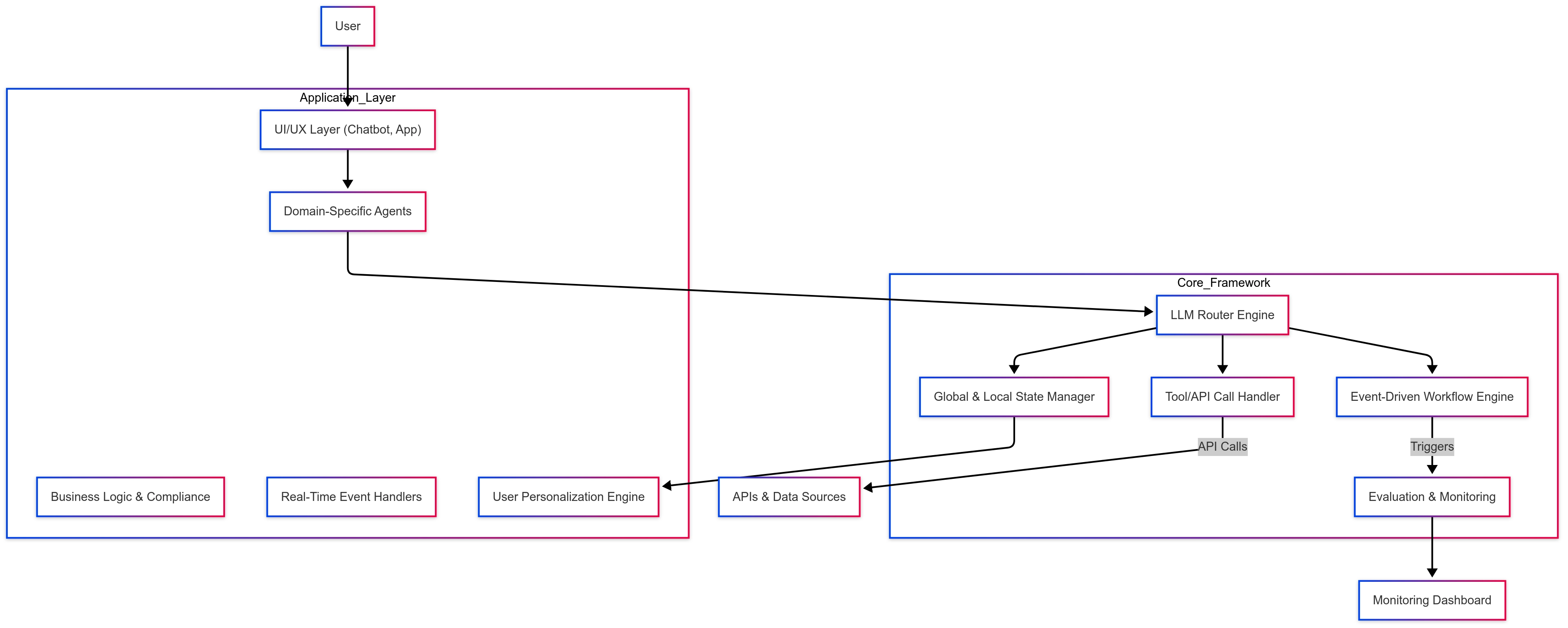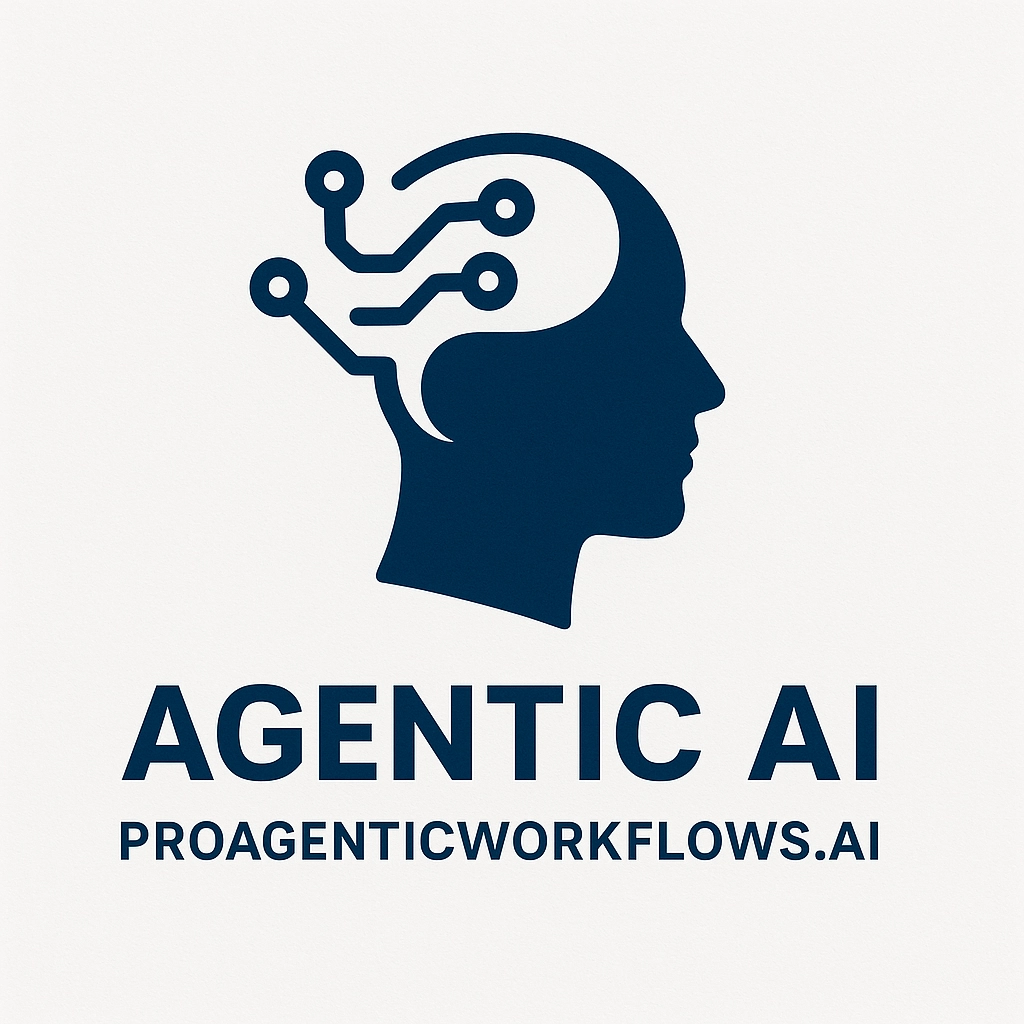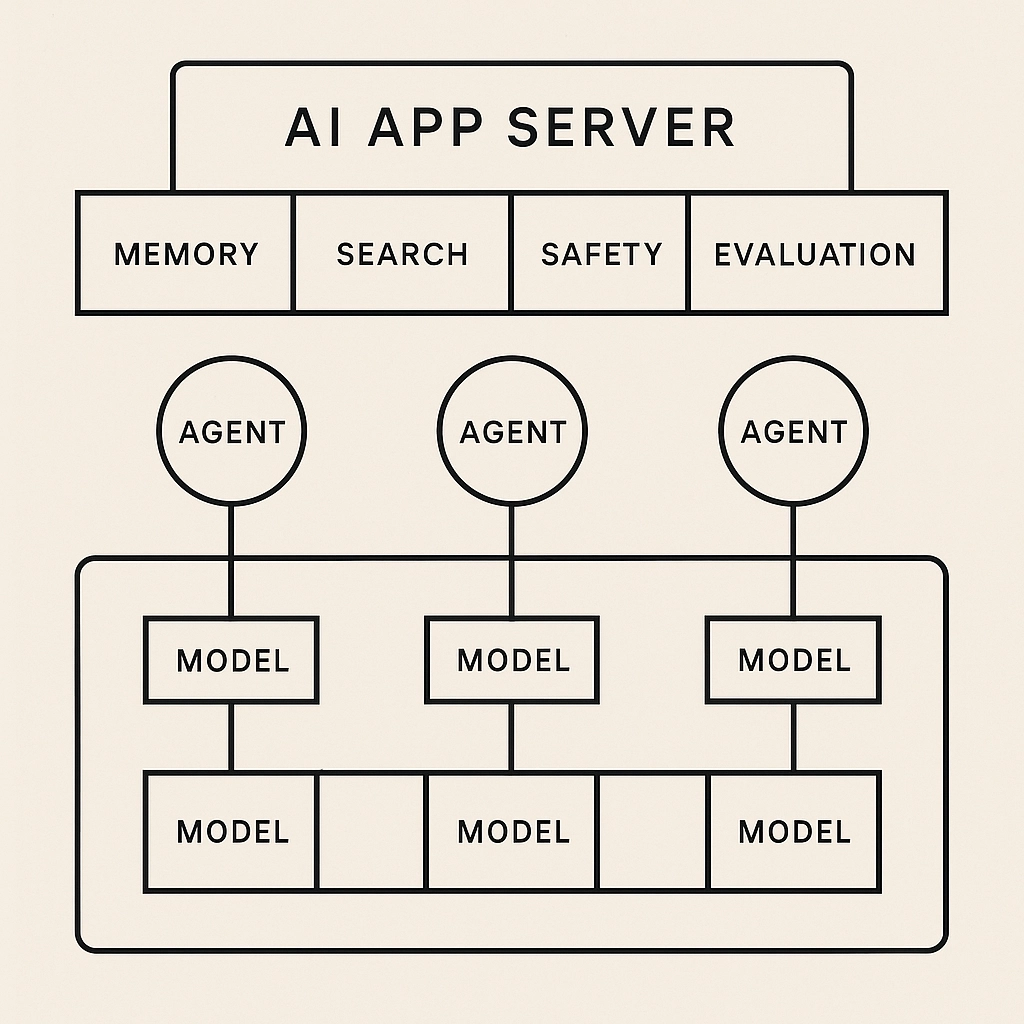The rise of Large Language Models (LLMs) and AI agents has revolutionized the way we design and deploy intelligent systems. As AI agents become increasingly capable of handling complex tasks, the challenge lies in orchestrating multiple agents in dynamic, multi-step workflows. This calls for a robust Multi-Agent Core Framework complemented by a flexible Application Layer tailored to specific use cases.
In this blog, we delve into the essential components of designing multi-agent systems, exploring the roles of the core framework and the application layer, their interplay, and how to build scalable, adaptable, and efficient AI-driven solutions.
📊 Understanding the Multi-Agent Architecture
The Core Framework vs. Application Layer
To develop effective AI agent systems, it’s crucial to separate foundational infrastructure from domain-specific logic:
Multi-Agent Core Framework: Provides general-purpose tools, orchestrates agents, manages workflows, and ensures system stability.
Application Layer: Handles user interactions, business logic, and domain-specific workflows tailored to the end-user experience.
This separation ensures scalability, flexibility, and easier maintenance while allowing the core framework to serve multiple industries and use cases.
⚙️ Building the Multi-Agent Core Framework
The Core Framework is the engine that drives AI agents. It handles orchestration, state management, tool integrations, and ensures agents collaborate effectively.
1. Event-Driven Architecture
Adopting an event-driven model allows agents to operate asynchronously, promoting scalability and reducing latency:
Event Bus: Enables communication between agents, triggering downstream actions based on specific events.
Asynchronous LLM Calls: Ensures agents continue processing other tasks while waiting for LLM responses, improving overall efficiency.
2. Workflow Orchestration
Support both graph-based workflows (deterministic paths) and event-driven workflows (reactive tasks):
LLM Router Engine: Determines the next action based on user input, data context, and system state.
Hybrid Workflows: Combine fixed processes with reactive components for complex, multi-layered applications.
3. State and Context Management
Efficient state management is crucial for multi-agent systems:
Global State: Maintains long-term data (user preferences, system logs) accessible by all agents.
Local State: Stores temporary or intermediate results for specific agents without polluting the global context.
Memory Optimization: Use external storage (e.g., vector databases) to avoid LLM context window limitations.
4. Tool and API Integration
Agents often rely on external data sources and services. The framework should provide:
Unified Tool Call Handler: Manages API interactions, ensuring consistency and error handling.
Error Recovery Mechanisms: Detect and resolve common issues like API failures or invalid inputs.
5. Evaluation and Monitoring
Continuous monitoring and evaluation ensure system health and efficiency:
Telemetry and Logging: Track agent performance, workflow success rates, and identify bottlenecks.
Agent Evaluation Framework: Measure routing accuracy, task completion rates, and adherence to constraints.
🖥️ Designing the Application Layer
The Application Layer tailors the core framework to specific industry needs, handling user interactions, domain logic, and personalization.
1. Domain-Specific Agents and Workflows
Build specialized agents to address unique challenges within each industry:
Healthcare: Diagnostic agents, patient record analyzers, and appointment schedulers.
Finance: Investment advisors, risk assessment agents, and fraud detection systems.
Retail: Personalized shopping assistants, inventory managers, and customer service bots.
Education: Curriculum planners, virtual tutors, and student performance analyzers.
2. User Interface and Experience
Craft intuitive user interfaces to bridge AI capabilities and end-users:
Conversational Interfaces: Chatbots, voice assistants, or hybrid models.
Visualization Tools: Dashboards, charts, and real-time data feeds for better decision-making.
3. Business Logic and Compliance
Integrate industry-specific regulations and compliance standards:
Finance: SEC compliance, AML checks.
Healthcare: HIPAA regulations, patient confidentiality.
Retail: GDPR compliance for customer data.
4. Real-Time Event Handling
Implement reactive features that respond to live data and user actions:
Healthcare: Immediate alerts for critical patient data.
Finance: Real-time market updates and trading alerts.
Retail: Stock level alerts and flash sale notifications.
🌐 Architectural Overview

1flowchart TD 2 subgraph Core Framework 3 A1[Event-Driven Workflow Engine] 4 A2[LLM Router Engine] 5 A3[Global & Local State Manager] 6 A4[Tool/API Call Handler] 7 A5[Evaluation & Monitoring] 8 end 9🆚 Core Framework vs. Application Layer: A Quick Comparison
Aspect | Multi-Agent Core Framework | Application Layer |
|---|---|---|
Primary Role | Infrastructure and agent orchestration | Domain-specific workflows |
Workflow Management | Event-driven & graph-based orchestration | Pre-built templates for specific tasks |
State Management | Global and local state handling | Contextual data per user or session |
Tool Integration | Unified API interactions | Domain-specific API usage |
User Interaction | None | Chatbots, mobile apps, dashboards |
Error Handling | Generic recovery protocols | Domain-specific fallback strategies |
Compliance | Core security protocols | Industry regulations (HIPAA, GDPR) |
Personalization | System-wide context management | User-specific preferences |
✅ Key Takeaways
Core Framework manages the “how” — orchestration, state management, and error handling.
Application Layer manages the “what” — domain-specific workflows, user experience, and business logic.
Asynchronous, Event-Driven Workflows enable scalability, flexibility, and improved performance.
Modularity promotes reusability — enabling diverse industry applications without rebuilding from scratch.
By mastering the interplay between the Core Framework and Application Layer, developers can create scalable, efficient, and intelligent multi-agent systems that cater to complex real-world applications across industries.






Comments